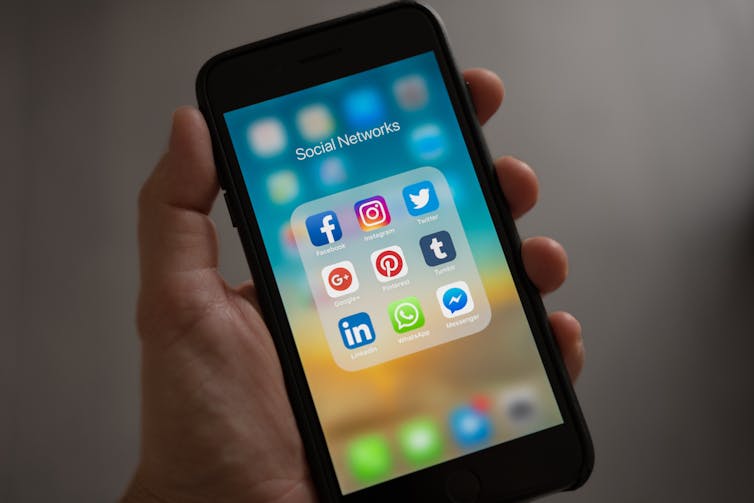A faculdade ainda pode ser rigorosa sem excesso de trabalhos de casa, por Kc Culver, The Conversation [Tradução: Vander Resende - texto original, com links, ao final]
28 de junho de 2021
Quão difícil deve ser conseguir um diploma universitário?
Quando o livro "Academically Adrift" apareceu em 2011, gerou uma preocupação generalizada de que a faculdade não estava educando efetivamente os alunos e preparando-os para o mundo de hoje. Entre outras coisas, os autores Richard Arum e Josipa Roksa afirmaram que a maioria das faculdades não era rigorosa ou exigente, em parte porque os estudantes universitários nem liam, nem escreviam o suficiente para desenvolver suas habilidades de pensamento crítico. Contudo, é realmente a quantidade de trabalho atribuída aos alunos que torna a faculdade rigorosa e os ajuda a aprender?
Como um estudioso do ensino superior, observei de perto as experiências e resultados acadêmicos de estudantes universitários durante vários anos. Algumas pessoas definem o rigor como quantas páginas um aluno lê ou quantas páginas um aluno escreve. No entanto, em um estudo revisado por pares de 2021 que publiquei com os colegas John Braxton e Ernie Pascarella, descobri que se eles fizerem isso, podem perder elementos-chave do que é necessário para ajudar os alunos a desenvolver habilidades de pensamento crítico e se tornarem aprendizes de longo prazo. Eles também podem criar uma carga desnecessária para os alunos que têm outras demandas de seu tempo.
O que é rigor?
Na educação, o rigor acadêmico tende a ser definido de duas maneiras diferentes: como uma carga de trabalho exigente e difícil ou como experiências de aprendizagem que desafiam e apoiam os alunos a pensar mais profundamente.
Dada a importância do pensamento crítico, a forma como o rigor é definido faz uma grande diferença em termos de como o público em geral - bem como administradores, formuladores de políticas, jornalistas e pesquisadores - avalia se uma faculdade é rigorosa. Também faz diferença em termos das expectativas do corpo docente para os alunos, os tipos de atividades em sala de aula que usam e as tarefas que dão.
Em outras palavras, se rigor significa carga de trabalho, os alunos que passam muito tempo estudando devem se tornar melhores pensadores críticos. Em contraste, se rigor significa desafio acadêmico, então os alunos que praticam habilidades de pensamento de alto nível, como análise e avaliação, durante a aula, nas tarefas e durante os exames, devem se tornar melhores pensadores críticos.
É por isso que meu estudo examina cada definição de rigor - carga de trabalho e desafio acadêmico - em termos de ajudar os alunos a desenvolver habilidades de pensamento crítico. O estudo também examina essas definições de rigor em relação a duas dimensões relacionadas da aprendizagem ao longo da vida. Um é ler e escrever por prazer e o outro é o hábito de pensar profunda e criticamente sobre as coisas.
A diferença da faculdade
O estudo incluiu cerca de 2.800 alunos que frequentaram uma das 46 faculdades de quatro anos nos Estados Unidos entre 2006 e 2012. Esses alunos participaram do Estudo Nacional Wabash de Educação em Artes Liberais, que foi um grande estudo longitudinal de como as experiências na faculdade afetaram os resultados associado a uma educação em artes liberais. Eles completaram pesquisas e testes em três momentos diferentes durante a faculdade: no início do primeiro ano, no final do primeiro ano e no final do quarto ano.
Nessas pesquisas, os alunos relataram a carga de trabalho do curso, incluindo quantos
- livros que lêem,
- páginas que escreveram e
- horas que passaram estudando para a aula.
Eles também relataram o quanto seus cursos os desafiaram a se envolver no pensamento de ordem superior.
O corpo docente pede aos alunos que pratiquem o pensamento de ordem superior quando eles
- faça perguntas desafiadoras em sala de aula e
- dar tarefas que pedem aos alunos que analisem informações ou formem um argumento.
Como o Wabash National Study mediu o pensamento crítico e as habilidades de aprendizagem ao longo da vida dos alunos em vários pontos temporais, meu estudo analisou o quanto os alunos desenvolveram essas habilidades em relação à carga de trabalho e ao desafio acadêmico de suas aulas.
Claro, alunos que são
- motivado para tirar boas notas
pode ser mais propenso a desenvolver essas habilidades. E muitas outras experiências de faculdade, como
- interagir com o corpo docente fora da classe ou
- estar em um programa de honras,
também pode fazer a diferença. Meu estudo leva em conta esses fatores, a fim de compreender melhor a influência única de cada definição de rigor.
O que importa
Aqui está o que encontramos.
No primeiro ano da faculdade, o pensamento de ordem superior estava relacionado a um aumento em ambas as dimensões da aprendizagem ao longo da vida:
- ler e escrever por prazer e
- a tendência de pensar profundamente.
O pensamento de ordem superior não estava relacionado ao desenvolvimento de habilidades de pensamento crítico. A carga de trabalho não foi relacionada ao pensamento crítico dos alunos ou qualquer dimensão da aprendizagem ao longo da vida.
Ao longo de quatro anos de faculdade,
* pensamento de ordem superior estava relacionado a
- um aumento nas habilidades de pensamento crítico dos alunos e
- ambas as dimensões da aprendizagem ao longo da vida.
* A carga de trabalho estava relacionada a apenas uma dimensão da aprendizagem ao longo da vida:
- ler e escrever por prazer.
Essa relação foi impulsionada principalmente pela quantidade de leituras que os alunos faziam, e não pela quantidade de textos que eles escreveram ou pelo tempo que gastaram estudando.
Talvez o mais importante, meu estudo sugere que os alunos aprendem
- pensamento crítico importante e
- habilidades de aprendizagem ao longo da vida
por causa de experiências de aula desafiadoras, independentemente da carga de trabalho.
Em outras palavras, a faculdade pode ajudar os alunos a serem melhores
- pensadores críticos e
- alunos ao longo da vida
sem exigir que eles gastem muito tempo estudando.
Implicações para faculdades
Este estudo tem implicações em como os cursos e faculdades são avaliados como rigorosos. Também tem implicações para a forma como o corpo docente ensina, pois sugere que eles devem criar cursos que
- envolver os alunos no pensamento de ordem superior,
em vez de pedir-lhes que concluam longas tarefas de leitura e escrita.
Essas implicações são importantes principalmente para estudantes de baixa renda, que são mais propensos a trabalhar em tempo integral durante a faculdade. Os alunos de baixa renda também são mais propensos a ir para o campus e ter responsabilidades familiares.
Por causa dessas responsabilidades, os alunos de origens de baixa renda geralmente têm menos tempo para se dedicar ao dever de casa em comparação com os alunos de origens mais abastadas que moram no campus e não trabalham tantas horas. Isso cria uma lacuna de oportunidade na capacidade dos alunos de serem bem-sucedidos. Um relatório de 2018 do Pell Institute mostra que os alunos de baixa renda se graduam a taxas muito mais baixas do que os alunos de classes de renda mais alta.
Se os campi desejam que os alunos de baixa renda se formem na mesma proporção que seus colegas, é importante que esses alunos tenham uma carga horária razoável em seus cursos, para que não tenham que escolher entre a faculdade e suas outras responsabilidades.
https://theconversation.com/college-can-still-be-rigorous-without-a-lot-of-homework-162225
Este artigo foi republicado de The Conversation sob uma licença Creative Commons. Leia o artigo original.
College can still be rigorous without a lot of homework, by Kc Culver,
The Conversation,
June 28, 2021
How hard should it be to earn a college degree?
When the book "Academically Adrift" appeared in 2011, it generated widespread concern that college was not effectively educating students and preparing them for today's world. Among other things, authors Richard Arum and Josipa Roksa claimed that most colleges were not rigorous or demanding, in part because college students were not reading and writing enough in order to build their critical thinking skills. But is it really how much work students are assigned that makes college rigorous and helps them learn?
As a scholar of higher education, I have taken a close look at college students' academic experiences and outcomes for several years. Some people define rigor as how many pages a student reads or how many pages a student writes. But in a 2021 peer-reviewed study that I published with colleagues John Braxton and Ernie Pascarella, I found that if they do that, they might miss key elements of what it takes to help students develop critical thinking skills and become lifelong learners. They also might create an unnecessary burden for students who have other demands on their time.
What is rigor?
In education, academic rigor tends to be defined in two different ways: as a workload that is demanding and difficult or as learning experiences that challenge and support students to think more deeply.
Given the importance of critical thinking, the way rigor is defined makes a big difference in terms of the ways that the general public—as well as administrators, policymakers, journalists and researchers—assess if a college is rigorous. It also makes a difference in terms of faculties' expectations for students, the types of classroom activities they use and the assignments they give.
In other words, if rigor means workload, then students who spend a lot of time studying should become better critical thinkers. In contrast, if rigor means academic challenge, then students who practice higher-order thinking skills, such as analysis and evaluation, during class, on assignments and during exams should become better critical thinkers.
That's why my study examines each definition of rigor—workload and academic challenge—in terms of helping students develop critical thinking skills. The study also looks at those definitions of rigor in relation to two related dimensions of lifelong learning. One is reading and writing for pleasure, and the other is the habit of thinking deeply and critically about things.
The college difference
The study included about 2,800 students who attended one of 46 four-year colleges in the U.S. between 2006 and 2012. These students took part in the Wabash National Study of Liberal Arts Education, which was a large, longitudinal study of how college experiences affected outcomes associated with a liberal arts education. They completed surveys and tests at three different points during college: at the beginning of their first year, at the end of their first year and at the end of their fourth year.
In these surveys, students reported their course workload, including how many
- books they read,
- pages they wrote and
- hours they spent studying
for class.
They also reported how much their courses challenged them to
engage in higher-order thinking.
Faculty ask students to practice
higher-order thinking when they
- ask challenging questions in class and
- give assignments that ask students to analyze information or form an
argument.
Since the Wabash National Study measured students' critical thinking
and lifelong learning skills at multiple timepoints, my study looked at
how much students developed these skills in relation to their workload
and the academic challenge of their classes.
Of course, students who are
- motivated to get good grades
may be more likely to develop these
skills. And lots of other college experiences, like
- interacting with
faculty outside of class or
- being in an honors program,
might also make a
difference. My study accounts for these factors in order to better
understand the unique influence of each definition of rigor.
What matters
Here's what we found.
In the first year of college, higher-order thinking was related to an
increase in both dimensions of lifelong learning:
- reading and writing
for pleasure and
- the tendency to think deeply.
Higher-order thinking was
not related to development of critical thinking skills. Workload was
not related to students' critical thinking or either dimension of
lifelong learning.
Across four years of college,
* higher-order thinking was related to
- an
increase in students' critical thinking skills and
- both dimensions of
lifelong learning.
* Workload was related to only one dimension of
lifelong learning:
- reading and writing for pleasure.
This relationship
was driven primarily by the amount of reading students did, rather than
the amount of writing they did or the amount of time they spent
studying.
Perhaps most importantly, my study suggests that students learn
- important critical thinking and
- lifelong learning skills
because of
challenging class experiences regardless of the workload.
In other
words, college can help students be better
- critical thinkers and
- lifelong learners
without requiring them to spend a lot of time
studying.
Implications for colleges
This study has implications for how courses and colleges are assessed
as being rigorous. It also has implications for how faculty teach, as
it suggests that they should create courses that
- engage students in
higher-order thinking,
rather than asking them to complete long reading
and writing assignments.
These implications matter particularly for students from low-income backgrounds, who are more likely to work full-time during college. Low-income students are also more likely to commute to campus and have family responsibilities.
Because of these responsibilities, students from low-income backgrounds often have less time to dedicate to homework compared to students from wealthier backgrounds who live on campus and who don't work as many hours. This creates an opportunity gap in students' ability to be successful. A 2018 report from the Pell Institute shows that low-income students graduate at much lower rates than students from higher-income backgrounds.
If campuses want students from low-income backgrounds to graduate at the same rate as their peers, then it is important that these students have a reasonable workload in their courses so that they don't have to choose between college and their other responsibilities.
https://theconversation.com/college-can-still-be-rigorous-without-a-lot-of-homework-162225
This article is republished from The Conversation under a Creative Commons license. Read the original article.






